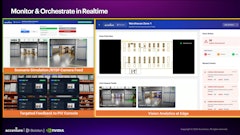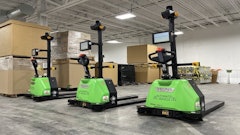Now is the time for retailers to start getting their distribution centers and warehouses ready for the holidays. Preparing for the shopping frenzy requires talent whereby retailers need to make as much profit as possible without leaving a huge amount of stock at the end of the season. Companies need to be sophisticated in the way they balance their holiday merchandise flow by using technology to gain a better view of inbound inventory, improve throughput in their distribution centers, and automate picking and packing processes.
To start, retailers need a dedicated holiday supply chain strategy in place that includes everything from extra personnel for picking and packing orders to contracting with logistics partners to ensure on-time deliveries. A fine-tuned supply chain can turn any retailer into a holiday hero by ensuring they are properly prepared for any volatile swings in demand and faster product delivery to reduce stock-outs.
This year, there are only 26 days between Black Friday and Christmas, which can put a crunch on supply chain planning and strategy. With less time to plan all the activity between manufacturers, suppliers and logistics planners, there is little room for error. Make sure you have clear, open communications between manufacturers and logistics suppliers with delivery dates and inventory needs.
Last year, due to the bad weather and unexpected demand peaks, several large retailers were unable to meet desired delivery dates. Make sure your supply chain is agile enough for unexpected events, whether they are natural disasters or demand peaks, to ensure you have the right amount of products at the right locations.
Ideally, retailers should begin their peak season supply chain preparations in January. That is the time to start forecasting demand, and working with manufacturers to strategize product portfolio, market demand and stocking levels. Now retailers should be fine-tuning these plans and making sure that supply chain partners are able to execute them. Finalize promotions, specials, coupons and production schedules to ensure you are ready for the upcoming holiday peak season.
Ill-equipped warehouses may find themselves at risk of damaging customer loyalty and profits if orders are not shipped on time. A robust warehouse layout and organization can make the holiday delivery season much less chaotic. Retailers need to optimize their warehouse layout for maximum efficiency and incorporate best practices learned from previous holiday seasons, such as placing fast-selling items closer to pickers. Ensuring material-handling equipment runs at its peak during the holiday season requires maintenance personnel to audit performance and perform preventive maintenance.
Whether you are using automating picking-and-packing systems, such as pick to light or pick to voice, adequate training on equipment usage should be performed so that workers are up to speed. To avoid delays in deliveries, ensure you have enough materials on hand at packing stations, such as tape, boxes and other packing materials.
If you are an omnichannel retailer, your fulfillment processes, such as ship from store, shop to store and in-store pickup, require changes in your warehouse—and material-handling automation. Voice-picking and pick-to-light systems show marked improvement in productivity. A warehouse control system can optimize the flow of materials by controlling conveyors, sortation units, wave picking operations and more. Using goods-to-person processes and equipment speeds fulfillment rates and reduces picker footsteps.
Don’t cut corners with the returns process. Not only does this improve customer experiences and, ultimately, customer satisfaction and loyalty, but a well-designed returns process can also better support the bottom line. Returns are simply a cost of doing business, howeve,r with the right returns supply chain strategy, you can create a better customer experience (driving customer loyalty and repeat business), as well as drive incremental value from the returned products by processing them quickly and making them available for sale back into retail or into alternate channels.




















